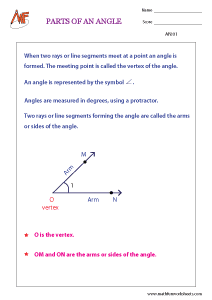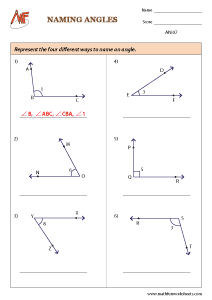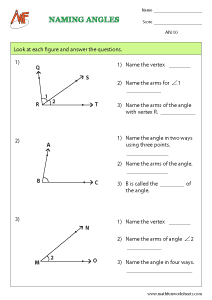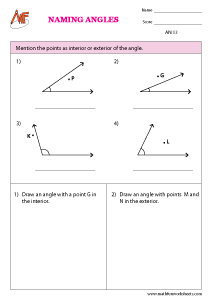Naming angles becomes easier with practice. Worksheets are great tools for this. They show angles in different positions and ask students to label them. Some include real-world shapes to make the practice more meaningful. These exercises help students build strong foundational skills. Over time, they become more confident and accurate. In conclusion, learning to name angles clearly and correctly is a small step that leads to big success in geometry.
Browse by Topics
- English Worksheets
- Kid's Corner
- Numbers & Operations
- Addition
- Subtraction
- Multiplication
- Division
- Decimals
- Place Value
- Roman Numerals
- Skip Counting
- Odd & Even Numbers
- Patterns
- Cardinal & Ordinal Numbers
- Rounding Numbers
- Estimation of Numbers
- Estimation of Time & Money
- Counting & Cardinality
- Comparing Numbers
- Ordering Numbers
- Fractions
- Prime & Composite Numbers
- Squares & Cubes
- Square & Cube Root
- Divisibility Rules
- Factors & Multiples
- Data Handling
- Algebra
- Ratio
- Least Common Factor
- Greatest Common Factor
- Percent Worksheets
- Proportion
- Order of Operations
- Scientific Notation
- Exponents
- Algebraic Expressions
- Evaluating Algebraic Expressions
- Simplifying Algebraic Expressions
- Graphing Lines
- Point Slope Form
- Two Point Form
- Two Intercept Form
- Equations
- Identifying Functions
- Evaluating Functions
- Function Table
- Domain and Range
- Trigonometric Charts
- Quadrants
- Polynomials
- Measurement
- Geometry
- Word Problems
Naming Angles Worksheets
Naming angles is a basic yet essential skill in geometry that helps students describe and communicate angle measurements clearly and accurately. We usually name an angle using three points. The vertex point is always in the middle. For example, if points A, B, and C form an angle with B as the vertex, we write it as ∠ABC or ∠CBA. If there is no chance of confusion, we can name it simply by its vertex, like ∠B. This system keeps things clear, especially when several angles share the same vertex. In diagrams, angles are often marked with arcs and labeled to make identification easier.
Using correct angle names is important in solving geometry problems. It helps students explain their thinking and apply geometric rules with accuracy. When working with different types of angles—acute, right, obtuse, or reflex—students must first name them properly before they can solve for unknowns or prove statements. Short, clear names also help during discussions or written explanations.
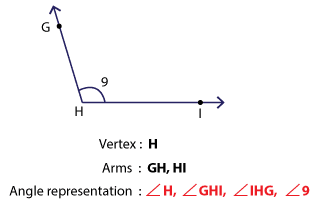
The last set of worksheets deal with exterior and interior of the angle.

Angle naming also plays a big role in more advanced geometry. In parallel line problems, triangle proofs, and polygon studies, precise angle names help organize information and guide the steps of a solution. For example, to prove two lines are parallel, a student might need to show that alternate interior angles are equal. To do this clearly, they must refer to the correct angles by name. Download all these worksheets to know all about angles which forms the base of triangles.

